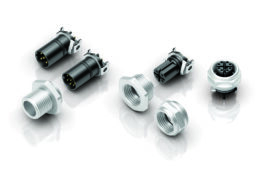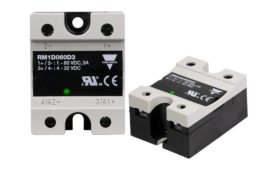Leland Teschler • Executive Editor
[email protected]
On Twitter @ DW—LeeTeschler
The time when autonomous vehicles dominate the roads will mark the end of the auto industry as we know it. That was the message from now-retired GM vice chairman Bob Lutz who spoke recently at an automotive electronics forum sponsored by Mentor Graphics, a Siemens business. At the forum, Lutz shared a number of thoughts that probably have crossed the minds of auto industry insiders watching autonomous technology unfold.
Lutz has championed the development of striking vehicles that include the Dodge Viper and Chevy Camaro.  So it’s worth taking note when he predicts autonomous vehicles will bring an end to personalized styling in transportation. Instead, most future cars will be anonymous sausage-shaped modules, he predicts.
So it’s worth taking note when he predicts autonomous vehicles will bring an end to personalized styling in transportation. Instead, most future cars will be anonymous sausage-shaped modules, he predicts.
The shape will come from the necessity of nose-to-tail separation that will characterize the future
conveyor-belt-like virtual trains of autonomously driven vehicles. The average speed of these virtual trains will probably be in the 150 to 200 mph range, Lutz thinks. Modules will decouple from these trains at the right point to get passengers to their destination. Wireless charging cables buried in the ground will recharge the batteries that power these vehicles.
The resulting system will be far more efficient than today’s and might even extend to quad-copter low-altitude transportation also piloted robotically, Lutz thinks. Of course, there’s no reason to produce “muscle-car” vehicles when everything on the road travels only inches apart and no one passes.
If you are in the auto business, this scenario probably leaves you wondering what happens to vehicular OEMs. One outcome: “The branded model is in trouble,” Lutz says. “And motorcycles are really doomed.” You can also surmise that vehicle stylists will be out of jobs 20 to 25 years from now, the time when
Lutz figures sausage-shaped modules will begin to dominate.
Lutz sees the auto industry transforming into something that looks a little like the cell phone companies of today: The money will be in providing services rather than in selling hardware. “Nobody makes money on phones today. And so it will be with autonomous vehicles,” he predicts.
His reasoning is that the main buyers of vehicles will be ride providers like Uber and Lyft. They’ll likely procure 200,000 to 300,000 vehicles at a time. So say goodbye to your local car dealers. More
concerning if you’re in the business of selling cars, the basic profitability of the auto business goes away when its hardware gets sold by the freight carload.
And it won’t just be local dealers who go away. So too will brand names. “The modules that get sold as transportation won’t be branded as Ford or GM. They’re more likely to be branded to the service provider,” Lutz predicts.
Of course, the transition to vehicular modules won’t be immediate. Lutz thinks there will be a blend of autonomous and regular versions until insurance companies realize that 90% of traffic accidents arise from human error. Eventually the government will step in and phase out human-piloted vehicles on main roads. At that point, the few remaining vehicles with steering wheels will be found on what will be the
equivalent of today’s dude ranches for horse riding aficionados.
All in all, the future that Lutz envisions will render the ability to drive a car about as common as the ability to ride a horse. That leaves us with one piece of parting advice: If you happen to have a collection of muscle cars that you plan on leaving to your descendants, you might consider liquidating soon. It’s likely your future kin won’t know what to do with a garage full of Mustangs, GTOs, and street Hemis.
Filed Under: Cables + cable management, Commentaries • insights • Technical thinking, Automotive, ELECTRONICS • ELECTRICAL





It also means the end of traffic related law enforcement as we know it. There will be little need to investigate accidents,. Because if they do happen, the why will be known immediately. There will be no such thing as a speeding vehicle, incapacitated drivers will not be an issue. Autonomous vehicles change everything, roads can be narrower, traffic will not always have to stop at intersections (it will just be slowed, or sped up as needed to move the most vehicles through). Being there will be nice, getting there will be painful. There will be a LOT of disruptions in the economy.
Safer driving–boring but safer! I miss the drive in movies, popcorn and romantic evenings while not watching the movie!!!
This sounds like a vision of Utopia, and it makes just as much sense. Lutz has made his money and now can say whatever he wants..
The problems with this vision is that it ignores the costs of making it happen. It also ignores the costs of losing personal freedom, and the ability to make personal choices. The whole concept of modular vehicles available on demand requires that all vehicles be devoid of any personal; items, like a cab or city bus. We have a system that provides transport without personal driving, it is AMTRAK, and while it is presently small, if more people wanted that mode they would use it. But the single biggest qestion is who is going to be willing to pay for it? Certainly not me!!!
Who is going to keep this huge collection of life-critical equipment working perfectly, and where is the money to pay them going to come from????
A flaw in purely techno-scientific thinking: just because we can do it, doesn’t mean we should do it. Many possibilities that are feasable should definitely not be pursued because we are human persons, not ‘consumers’ or machines ourselves. Genetically modified life? AI autonomous drone weapons? Think about what is coming….. The myth of progress is unfolding as a dream turned nightmare. We need to understand that human intelligence is not as defined in AI circles as merely ‘information, data processing’. Look at history, the Story of being human: psyche, soul, personhood, I-Thou realities which supercede the material universe. None of these things serve who we are.